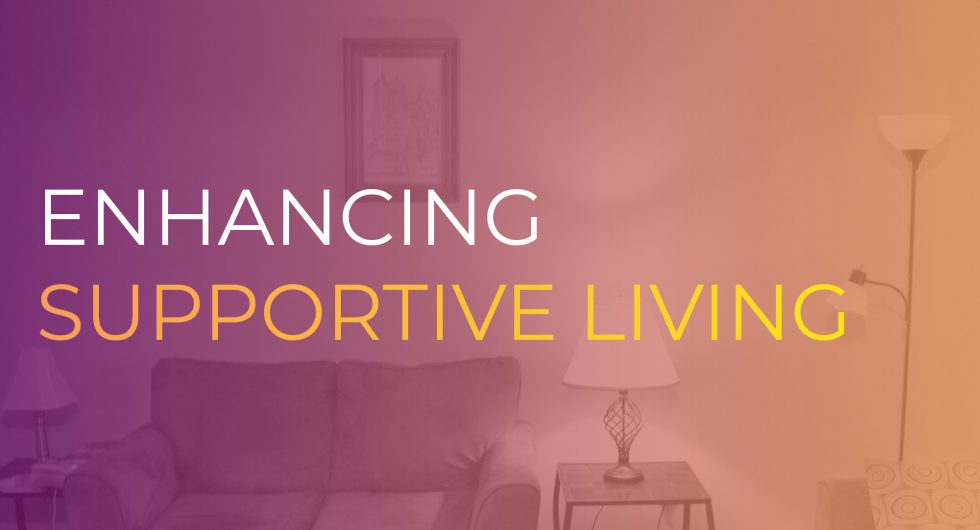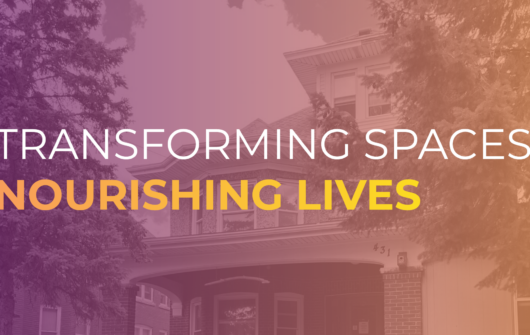Enhancing Supportive Living
Posted on: September 30, 2020

A Bridge to Independence
We’re enhancing the way our Supportive Living program functions, and we’re increasing its focus on vocational and housing support. A large part of this has been driven by resident feedback, and we know these changes will lead to better services for program participants.
The basic concept of the program remains the same: Supportive Living features peer-supported apartments for people with substance use disorders. Two or three people live in an apartment together, and a successful stay is usually around six months to a year.
Joshua Kellick, Supportive Living’s Reintegration Manager, sees the program as a “bridge” between intensive, group-style residences and living independently. “We’re so different because our residents have 90% of their time to themselves,” he explained. Residents still receive individual and group support sessions, but they’re less frequent than the daily meetings often held in other types of programs.

Responding to Resident Feedback
People in Supportive Living usually have received plenty of information on how to best manage their substance use disorder from other programs they’ve attended previously. At this stage, people are typically looking for different kinds of supports and services than those new to recovery. Specifically, Supportive Living residents have requested a bit more structure in the program along with additional attention paid to housing and vocational resources.
At the moment, Supportive Living residents are encouraged to work or go to school. These will soon become expectations of all program participants. This way, residents can acclimate to work or school while still receiving supportive services from our staff members and a safe place to live. If they encounter some challenges, staff are merely a phone call away. “The focus for Supportive Living has always been to develop the skills that will help residents become independent,” explained Joshua.
The enhancements to the services offered in Supportive Living are a direct response to resident feedback. “We want to make a program that residents are invested in,” said Joshua. Similar updates were rolled out at Unity House recently that adapt it to OASAS’s new Reintegration element of residential care. In fact, these changes are setting the path for Supportive Living to become certified as Reintegration, too.
Refined Vocational Supports
A major part of Supportive Living’s enhancements will involve a stronger connection with our newly-restructured Vocational program. Natalie Beilein, our Vocational Rehabilitation Supervisor, heads up this program. Over the last few months, Natalie has certainly hit the ground running and has created an innovative new framework for vocational services throughout our agency. “It’s a scaffolding concept,” explained Natalie.

Each level of care has its own theme that reflects the evolution a person may take when moving through our continuum. She’s called the framework Vocational GPS (Guidance, Preparation, and Success). Our Rehabilitation programs start the track with Guidance where residents explore potential options for career interests. Community Residences are designated as Preparation, and residents in these programs use what they learned in the previous level to set out a path that gets them ready for employment.
Supportive Living will allow residents to put everything they’ve learned “into action” according to Natalie. This will involve going to a job or school with support from vocational staff. In addition, residents’ vocational plans from our Rehab and Community Residence programs “will transfer right into Supportive Living” as stated by Natalie. This seamless transition will help keep the process efficient for both staff and residents transferring internally. Referrals from other providers can expect a comprehensive vocational evaluation, too.
These enhancements will kick off at the end of September, and both Joshua and Natalie are excited for the change. Joshua said that his staff have been “very receptive,” and since this is all done in response to resident feedback, we can expect increased engagement among Supportive Living residents. “This is what success looks like,” said Natalie.
Other Recent Posts
Your donation can save a life!
In the grip of the opioid epidemic, you can make a difference. Any amount helps.





